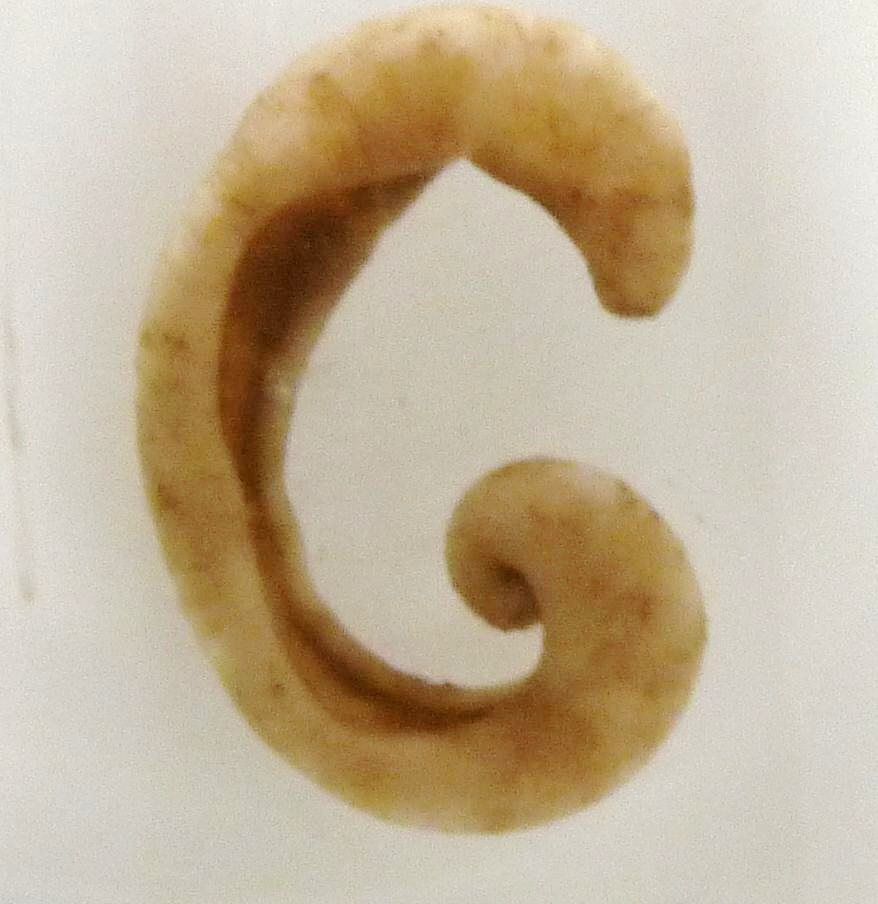Solenogasters on:
[Wikipedia]
[Google]
[Amazon]
The Solenogastres (less often referred to as Neomeniomorpha), commonly known as solenogasters, are a class of small, worm-like, shell-less


molluscs
Mollusca is a phylum of protostome, protostomic invertebrate animals, whose members are known as molluscs or mollusks (). Around 76,000 extant taxon, extant species of molluscs are recognized, making it the second-largest animal phylum ...
( Aplacophora), the other class being the Caudofoveata
Caudofoveata is a small class within the phylum Mollusca, also known as Chaetodermomorpha. The class is often combined with Solenogastres and termed Aplacophora, but some studies have cast doubt on the monophyly of this group.
Anatomy
Caudof ...
( Chaetodermomorpha).MolluscaBase eds. (2021). MolluscaBase. Solenogastres. Accessed through: World Register of Marine Species at: http://www.marinespecies.org/aphia.php?p=taxdetails&id=2094 on 2021-04-14
Some recent literature and recent molecular evidence, indicates that the Aplacophora may be polyphyletic
A polyphyletic group is an assemblage that includes organisms with mixed evolutionary origin but does not include their most recent common ancestor. The term is often applied to groups that share similar features known as Homoplasy, homoplasies ...
, and therefore some taxonomists may divide Solenogastres and Caudofoveata into separate classes.
Morphology
In contrast to many other mollusc classes, aplacophorans have no shell, and are instead covered by aragonitic sclerites (calcareous
Calcareous () is an adjective meaning "mostly or partly composed of calcium carbonate", in other words, containing lime (mineral), lime or being chalky. The term is used in a wide variety of Science, scientific disciplines.
In zoology
''Calcare ...
spicules), which can be solid or hollow. These spicules can be arranged perpendicular to one another within the cuticle to form a skeleton, stick up to form a palisade, or can lie flat against the cuticle.
80% of solenogaster species
A species () is often defined as the largest group of organisms in which any two individuals of the appropriate sexes or mating types can produce fertile offspring, typically by sexual reproduction. It is the basic unit of Taxonomy (biology), ...
have a radula, while in others it is secondarily lost. The radula may bear one or more teeth per row; where there is more than one tooth, there is no central radular tooth. The radula grows by dividing existing teeth in two, or by adding a new tooth at the center of the radular row. The salivary gland
The salivary glands in many vertebrates including mammals are exocrine glands that produce saliva through a system of ducts. Humans have three paired major salivary glands ( parotid, submandibular, and sublingual), as well as hundreds of min ...
s are very elaborate, and are an important characteristic for taxonomy. Next to the mouth they have a unique sense organ, the vestibulum.
Solenogastres do not have true ctenidia, though their gill-like structures may resemble them.
Development
During development, many Solenogastres are covered by a spiny scleritome comprising spines or scale-like plates. This has been likened to the halwaxiid scleritome.Sclerite
A sclerite (Greek language, Greek , ', meaning "hardness, hard") is a hardened body part. In various branches of biology the term is applied to various structures, but not as a rule to vertebrate anatomical features such as bones and teeth. Instea ...
s of '' Epimenia'' start out solid before developing a hollow stem that subsequently solidifies.
Solenogastres can be found in a diverse range of habitats across the world, from the coast to the deep ocean.
Ecology
Diet
Solenogastres feed oncnidaria
Cnidaria ( ) is a phylum under kingdom Animalia containing over 11,000 species of aquatic invertebrates found both in fresh water, freshwater and marine environments (predominantly the latter), including jellyfish, hydroid (zoology), hydroids, ...
and ctenophores
Ctenophora (; : ctenophore ) is a phylum of marine invertebrates, commonly known as comb jellies, that marine habitats, inhabit sea waters worldwide. They are notable for the groups of cilia they use for swimming (commonly referred to as "combs ...
, either sucking their bodily fluids or eating their tissue. They do not use their radulae to rasp prey, as some other molluscs do.
Phylogeny
There is some uncertainty regarding the phylogenetic position of the Solenogastres. Traditionally considered to be the most basal molluscan group and the sister group to the Caudofoveata, alternatives to both of these statements have been proposed. Some molecular datasets plot Solenogastres as an outgroup to Mollusca. However, there are cryptic species which are hard to delineate due to there being a lack of multiple morphological characteristics.Families
* Acanthomeniidae Salvini-Plawen, 1978 * Amphimeniidae Salvini-Plawen, 1972 * Apodomeniidae Kocot, Todt, N. T. Mikkelsen & Halanych, 2019 * Dondersiidae Simroth, 1893 * Drepanomeniidae Salvini-Plawen, 1978 * Epimeniidae Salvini-Plawen, 1978 * Gymnomeniidae Odhner, 1920 * Hemimeniidae Salvini-Plawen, 1978 * Heteroherpiidae Salvini-Plawen, 1978 * Imeroherpiidae Salvini-Plawen, 1978 * Lepidomeniidae Pruvot, 1902 * Macellomeniidae Salvini-Plawen, 1978 * Meiomeniidae Salvini-Plawen, 1985 * Neomeniidae Ihering, 1876 * Notomeniidae Salvini-Plawen, 2004 * Phyllomeniidae Salvini-Plawen, 1978 * Proneomeniidae Mitchell, 1892 * Pruvotinidae Heath, 1911 * Rhipidoherpiidae Salvini-Plawen, 1978 * Rhopalomeniidae Salvini-Plawen, 1978 * Sandalomeniidae Salvini-Plawen, 1978 * Simrothiellidae Salvini-Plawen, 1978 * Strophomeniidae Salvini-Plawen, 1978 * Syngenoherpiidae Salvini-Plawen, 1978 ;Unassigned in Solenogastres * '' Pholidoherpia'' Salvini-Plawen, 1978 * '' Rhabdoherpia'' Salvini-Plawen, 1978 ;Synonyms: * Superorder Aplotegmentaria (not monophyletic) ** Myzomeniidae Thiele, 1894: synonym of Dondersiidae Simroth, 1893 * Superorder Pachytegmentaria (not monophyletic) ** Parameniidae Simroth, 1893: synonym of Pruvotinidae Heath, 1911 (invalid: type genus a junior homonym) ** Pararrhopaliidae Salvini-Plawen, 1972: synonym of Pruvotinidae Heath, 1911 ** Perimeniidae Nierstrasz, 1908: synonym of Pruvotinidae Heath, 1911 ** Proneomenidae Mitchell, 1892: synonym of Proneomeniidae Mitchell, 1892 ** Pruvotiniidae Heath, 1911: synonym of Pruvotinidae Heath, 1911 (incorrect original spelling) ** Solenopodidae Koren & Danielssen, 1877: synonym of Neomeniidae Ihering, 1876 ** Wireniidae Salvini-Plawen, 1978: synonym of Gymnomeniidae Odhner, 1920Images


References
Further reading
* {{Taxonbar, from=Q1152770 Mollusc classes